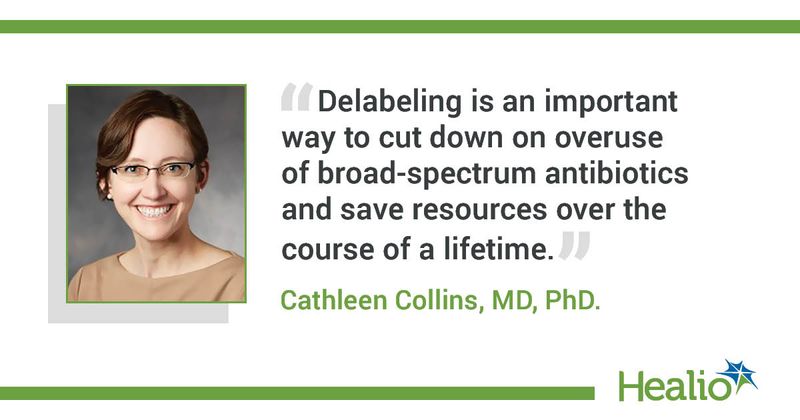Penicillin allergy intervention in primary care increases confirmatory testing referrals
An intervention involving an educational session and electronic medical record changes resulted in a mean increase of 19.6% in referrals for confirmatory testing among patients with a listed penicillin allergy, data show.
Previous research suggests that about 10% of the U.S. population has a documented penicillin allergy, but more than 90% of these individuals can tolerate it if tested, researchers wrote in Annals of Allergy, Asthma and Immunology.

“Mislabeled penicillin allergies are costly on the individual patient level, but also on the population level,” Cathleen Collins, MD, PhD, study coauthor and a board-certified allergist/immunologist at Rady Children's Hospital-San Diego, told Healio Primary Care. “Delabeling is an important way to cut down on overuse of broad-spectrum antibiotics and save resources over the course of a lifetime.”

The researchers developed and fine-tuned an intervention “unique in its focus on pediatric patients in a busy primary care setting,” Helen Wang, MD, study coauthor and an assistant professor of pediatrics at UC San Diego, said. The goal was to increase the number of patients to a medication clinic for confirmatory penicillin allergy testing.
Fifty-seven physicians participated in the intervention. The researchers first held educational sessions over a 4-month period to “increase awareness of unconfirmed penicillin-class allergies, the potential costs of using second-line alternative antibiotics and the role of testing at the medication allergy clinic,” Collins, Wang and colleagues wrote.
During the next 4 months, the researchers created an electronic health record alert that went through several modifications based on provider feedback. The final version of the alert contained a pop-up window that appeared during each well-child and urgent-care visit by patients who had a penicillin allergy listed in their EHR. According to the researchers, the pop-up window “included a link to a pre-filled order set designed to streamline physician workflow by including the diagnosis code, referral order to the medication allergy clinic, patient instructions regarding what to expect during the allergy test [and] also delineated contraindications to referral such as history of severe delayed drug reactions.” The attending physician could either act on the pop-up window instantaneously or dismiss it and address the alert later during the same patient visit.
The researchers wrote that the educational sessions increased medication allergy clinic referrals from 2% to 13%. The EHR alert increased the referral rate to 38% in the month that the final version was launched. The mean referral rate percentage over the course of the study was 19.6%. All 19 patients who completed a medical allergy clinic evaluation “were successfully delabeled via oral challenges with amoxicillin,” according to the researchers.
The EHR alert will likely undergo more modifications, Collins said.
“We found that there was an unanticipated barrier after the referral was placed, in that fewer patients than we expected actually made it into the allergy clinic,” she said. “We have discussed future interventions such as reaching out to patients directly or improving patient education about the importance of delabeling.”
The researchers also reported that the most frequent reason for not referring a patient to a medication allergy clinic was “time constraints,” which was cited 35% of the time. The second most common reason was that patients “declined at this time but [said it was] ok to ask again,” which was cited 14% of the time.
“We plan to further delineate the not referring reasons to gain a better understanding of why physicians did not refer and why families were hesitant,” Wang told Healio Primary Care. “This provides more information on the needs of physicians and families and allows for future targeted education and interventions.”
